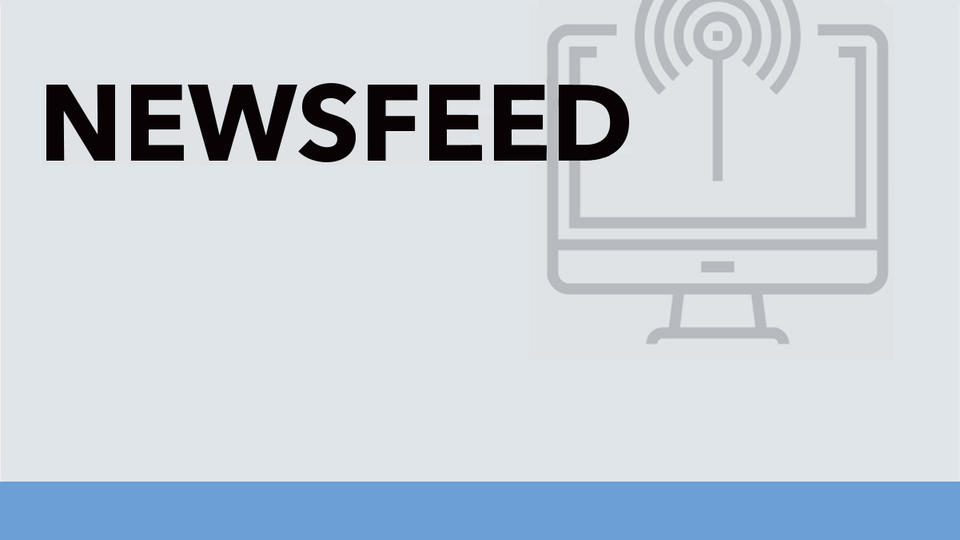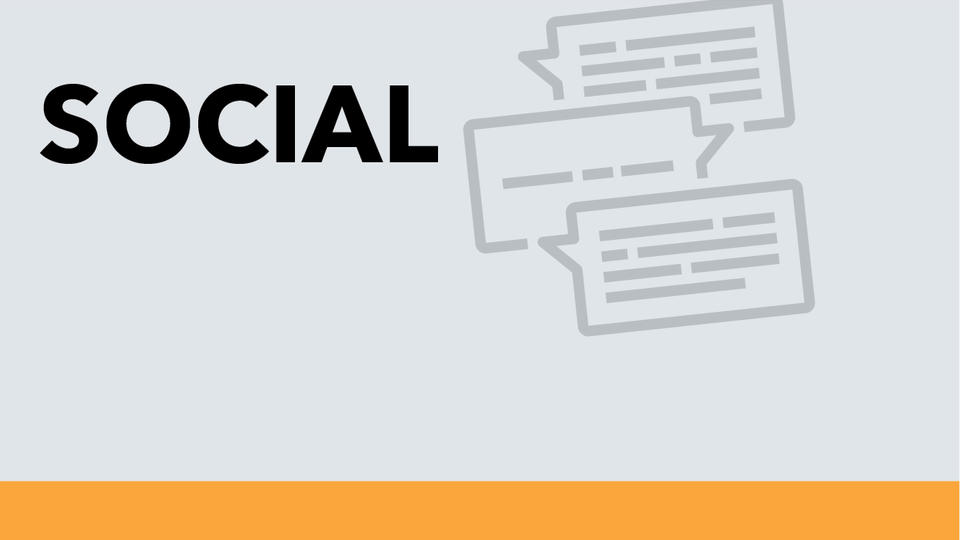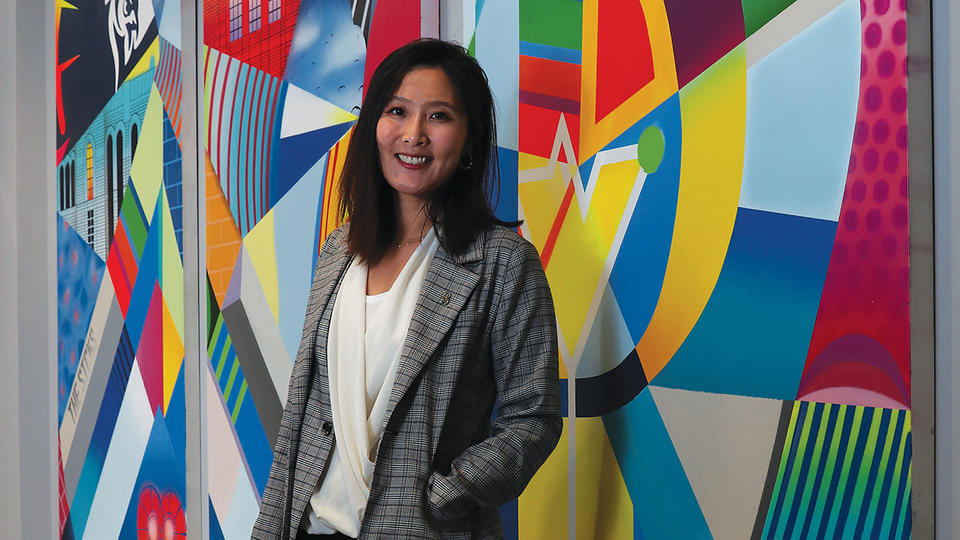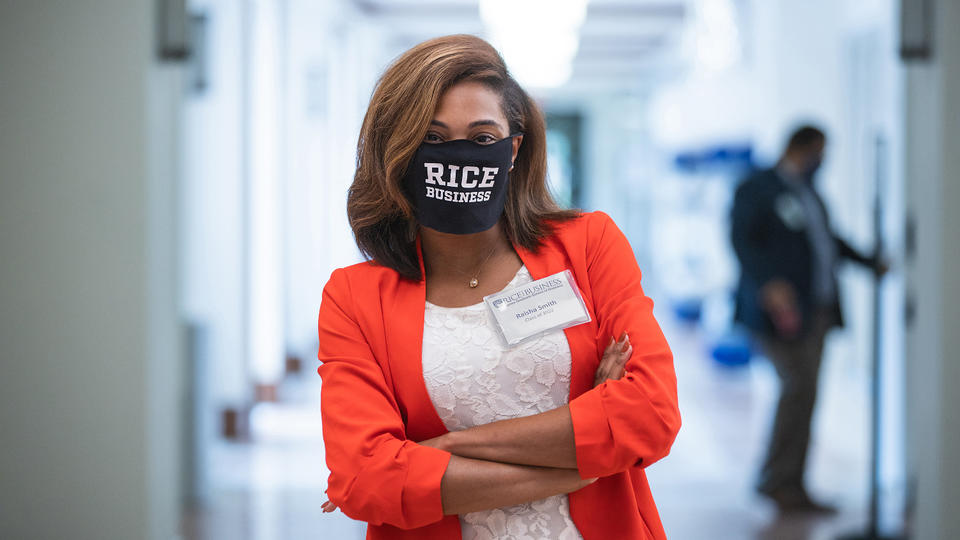
UnLocking Us With Brené Brown Podcast
Brené with Scott Sonenshein on Stretching and Chasing
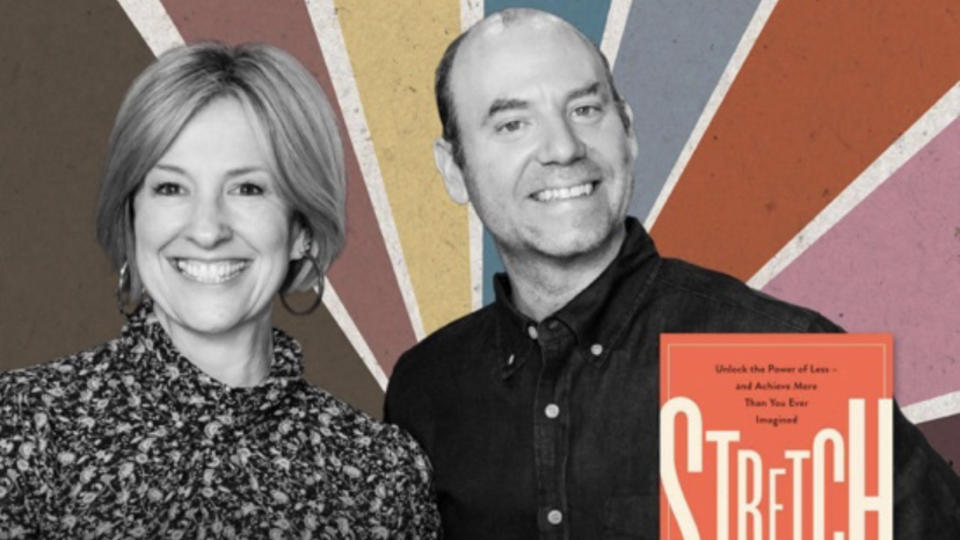
New Clean Energy Accelerator launches at Rice
The Clean Energy Accelerator will be a hands-on, 12-week program to support early stage energy startups from around the world, all of which will have access to the Rice Alliance network of energy corporations, investors and advisers.


Rice Alliance, the globally recognized initiative within the Jones Graduate School of Business at Rice University, will expand its programs to help startup enterprises with the launch of the Clean Energy Accelerator.
The accelerator will be a hands-on, 12-week program to support early stage energy startups from around the world, all of which will have access to the Rice Alliance network of energy corporations, investors and advisers. Rice Alliance will leverage existing relationships with energy corporations and investors, as well as its experiences from the Rice Business Plan Competition, energy tech venture forums and the Rice University OwlSpark accelerator.
The alliance, which is celebrating its 20th anniversary, supports entrepreneurship education, technology commercialization and the launch of technology companies. Since its inception, Rice Alliance has connected with more than 2,675 startups that have raised $21.5 billion in funding.
With a community entrepreneurs and investors, the accelerator is a commitment to expand that impact and continue supporting society’s transition to clean energy.
Joined by the Greater Houston Partnership, Mayor Sylvester Turner, Rice University President David Leebron and Wells Fargo, the accelerator’s launch announcement closed the 18th annual Rice Alliance Energy Tech Venture Forum, which was held virtually this year. The forum brought together more than 1,300 participants, including representatives from major energy investment firms and corporations.
“Houston is our home, and we are strong believers in our city,” said Brad Burke, managing director of the alliance. “It is here that some of the greatest minds in energy are innovating. New technologies, many driven by startup companies, have enabled the U.S. to become energy self-sufficient for the first time in history, but global energy needs are growing and changing. We need to apply that same entrepreneurial spirit and technology innovation to meet these challenges.”
Wells Fargo, a long-time Rice Alliance partner, provided lead funding to launch the program. In 2015, the alliance became a founding channel partner of the Wells Fargo Innovation Incubator (IN2), a $50 million collaboration with the U.S. Department of Energy’s national renewable energy lab..
“The Rice Alliance Clean Energy Accelerator is poised to increase the quality and quantity of clean-tech startups in the area, which benefits Houston but also has the potential to benefit the greater global economy,” said Jenny Flores, head of small business growth philanthropy at Wells Fargo. “At Wells Fargo, we believe that climate change continues to be one of the most urgent environmental and social issues of our time.”
The energy accelerator will support, champion, and align with the momentum and efforts happening in Houston to further the energy transition: “Houston truly is the hub of the global energy industry, and it is here where the next generation of energy leaders will create and scale innovations that will change the world,” said Bob Harvey, President and CEO at the Greater Houston Partnership. “Rice Alliance for Technology and Entrepreneurship has long served as a catalyst for positioning Houston as a leading center of technology entrepreneurship. The new Clean Energy Accelerator will build on that legacy and align with the work already taking place in Houston’s robust energy innovation ecosystem.”
The accelerator will support Houston’s recently-released Climate Action Plan, a strategy to reduce greenhouse gas emissions and make Houston carbon neutral by 2050. The plan is “a science-based, community-driven greenhouse gas emissions reduction strategy” as well as the goal of “being a leader in the global energy transition,” according to the site.
Turner said one of the plan’s goals is to create 50 “Energy 2.0” companies by 2025. “It’s a very ambitious goal, and it’s one the City of Houston, as a municipality, cannot do alone,” he said.
“Today’s announcement of the Rice Alliance Clean Energy Accelerator is a great example of what we have been seeking to build in Houston, an innovation ecosystem that can develop creative solutions to address our toughest challenges.”
A rendering of the Ion, the former Sears building in Midtown that is being transformed into an innovation center. Credit: Rice University.
The accelerator will be based in the Ion, the innovation and startup hub that will be the centerpiece of the innovation district Rice University is developing in Houston’s midtown area.

“I am proud and grateful that this initiative fully aligns with Rice University’s strategic plan, the Vision for the Second Century,” said Rice President David Leebron. “We have committed that Rice University will engage with and empower the City of Houston as an exemplary 21st-century metropolis. As one of our leading industries, the energy industry is an essential and foundational part of our Houston story.”
Among the community supporters for the new accelerator are a host of Houston’s energy industry leaders including BP, Chevron Technology Ventures, Equinor, ExxonMobil, NRG, Saudi Aramco Energy Ventures, Shell Ventures, Sunnova, Total, Tudor, Pickering, Holt & Co. and Halliburton Labs. Other community supporters include Houston Exponential, the Center for Houston’s Future and Greentown Labs.
Applications for startups will open in early 2021. For information visit RiceCleanEnergy.org.
CLASS NOTES
News and Notes from Rice Business Alumni
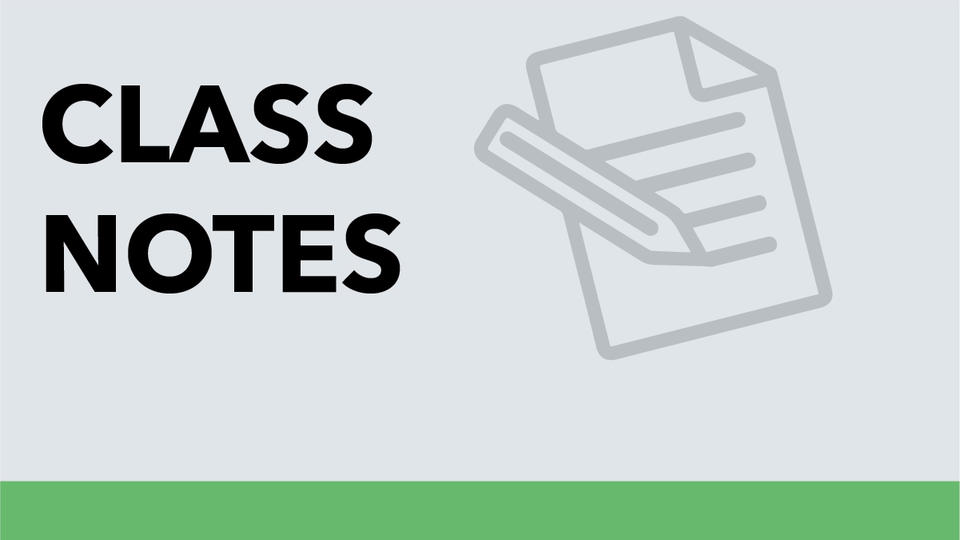
News and Notes from Rice Business Alumni
Daniela Flores ’20
On April 18, 2020, amidst the COVID-19 pandemic and country-wide shutdown, Daniela and Jose Delgado ’19 got engaged at the Houston Arboretum after three years of dating. Although they began dating before Rice Business, they both cherish the many memories they formed in the McNair halls, partios, after partios, and class trips along their classmates. Daniela and Jose are looking forward to this new stage in their relationship and their wedding in 2021 (here's hoping the pandemic will be over by then).

Kait (Riley) Nichols ’20
Kait married Wes Nichols this summer and Kait recently began a new position as a Tax Associate I at Weaver and Tidwell in Fort Worth.
Alex Lee ’19
Alex relocated from his hometown of Houston halfway across the world to Hong Kong in January to be with his fiancée Kara, and to begin a new role as Technical Program Manager at Telstra International (a global connectivity company). The couple happily tied the knot on June 27th, 2020 and are longing for the day when they can finally travel for their honeymoon.

Daniel Barvin ’18
Kai William Barvin was born on May 15, 2020.

Mijin Han ’17
Norma Torres Mendoza ’20 and Mijin Han, along with a couple of friends, took the time during quarantine to begin a podcast for first-generation college students. “How to College: First Gen” was created in an effort to democratize education and information. As first-gens that have experienced the process of going to and through college, Norma and Mijin are delighted to be able to share some of the insight and lessons learned along the way. Many of their guests will come from Rice University. Check out howtocollegefirstgen.org for more information.
Nicol Voutsinas ’11
Nicol and Michael Voutsinas welcome twin boys, Theodore and Dimitri Voutsinas, joining big sisters Evie (4.5) and Allie (2.5).

Tanay Shah ’04
Tanay took on a leadership role, leading the M&A Strategy practice for Deloitte Consulting. The group is focused on helping clients with portfolio strategy, finding pathways to growth and value creation through M&A, and diligence.

Hugo Vrsalovic ’04
Hugo Vrsalovic started “Life Is Wonderful: Empowering People Through Self Awareness,” working as a public speaker at middle schools, high schools, universities, corporations and recovery centers on recovery, addiction and life. Visit “Life Is Wonderful” on YouTube or check out the website: www.Lifeiswonderful.love.
Asma Ishaq ’02
In March 2020, Asma was appointed chairperson of the Trust Transparency Center's new collagen trade association, the Collagen Stewardship Alliance. On July 13, she was named NutraChampion 2020 for her lifetime achievement in the natural products industry and the collagen/hyaluronic acid (HA) market. And on July 23, The Women Presidents’ Organization (WPO) and American Express announced that Asma’s company, Modere, has been ranked No. 3 on the WPO’s annual list of the 50 Fastest Growing Women-Owned/Led Companies because of its 1500% growth in revenues from 2015-2019.
Brian Engleman ’98
This year has brought some changes in Brian’s professional life. He became co-fund manager at the San Diego Angel Conference and started as an advisor to Rehinged.AI, primarily working on strategy and business development. Many of you know he recently remarried, and Nora and Brian (and Brian’s three new step-kids) are safe, healthy and happy in San Diego. Special hello to the Flex MBA Class of 1998 and the JGS classes of 1997 & 1998.
Keep Exploring
Starting Up
Twenty years after the first Rice Business Plan Competition, Houston’s entrepreneurial ecosystem is booming (and Zooming).
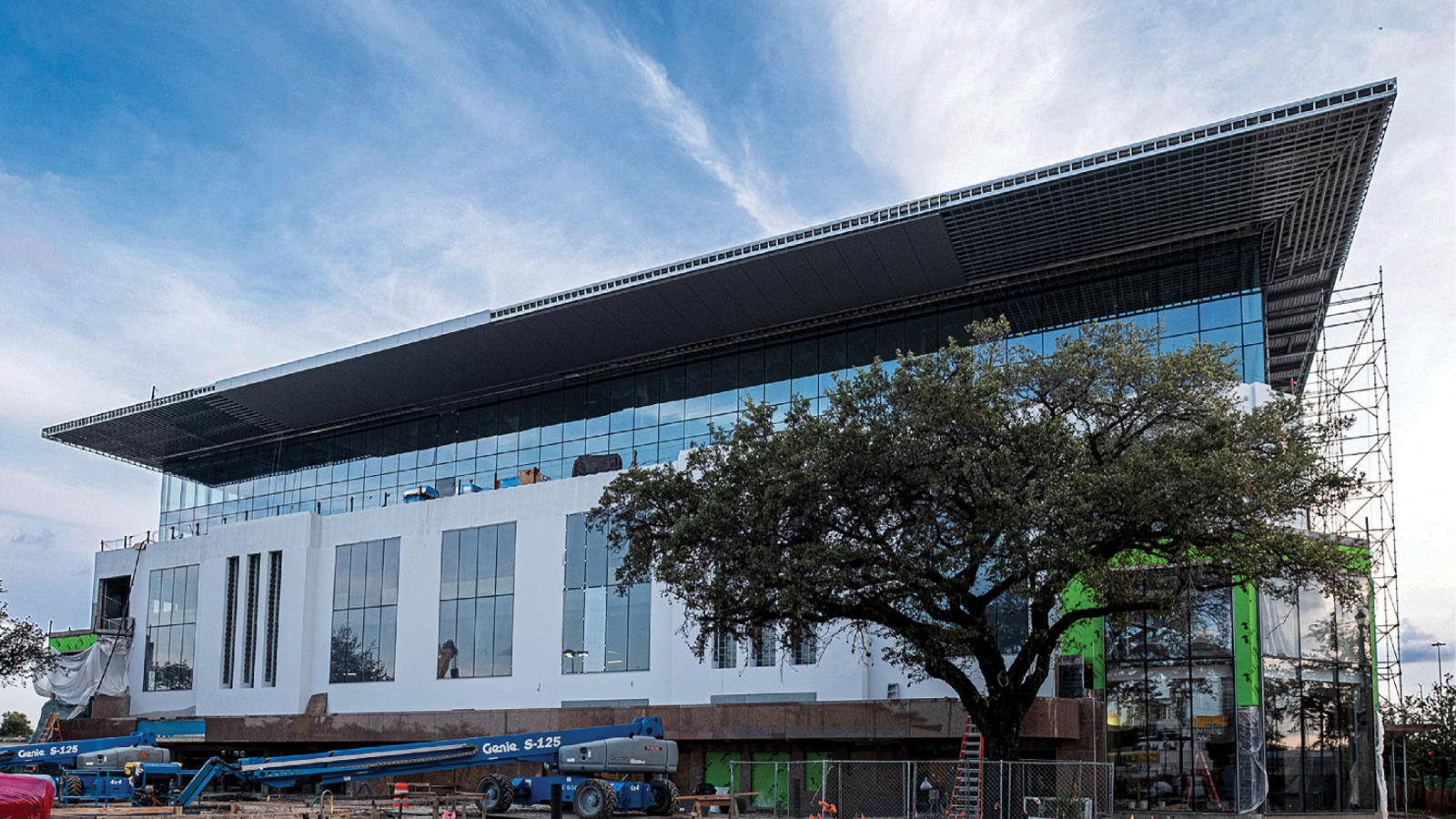

Twenty years after the first Rice Business Plan Competition, Houston’s entrepreneurial ecosystem is booming (and Zooming).
MBA students from all over the world donned Zoom-appropriate business attire this summer to deliver their business pitches virtually for the first time ever in the history of the Rice Business Plan Competition.
The competition, the world’s richest and largest graduate-level student startup competition, turned 20 this year during extraordinary times. Postponed from April because of the coronavirus pandemic, the competition went online in June, when up-and-coming entrepreneurs vied in virtual rooms for coveted prize money to invest in their growing businesses, taking home over $1.3 million in investment, cash and in-kind prizes.
Over the last 20 years, startups that competed in the RBPC have raised more than $2.3 billion in funding, including several in Houston. The competition’s platinum anniversary is a reminder that Rice Business has played a critical role in the development of Houston’s startup culture over the past two decades. Another reminder came when Rice’s graduate entrepreneurship program was rated No. 1 in the U.S. by the Princeton Review this year.
“Rice has been ahead of the curve,” says Harvin Moore, the head of Houston Exponential, a nonprofit that helps accelerate the growth of Houston’s technology innovation ecosystem. “We’re really seeing a blossoming of startups now.”
Building a Foundation
Years before the rest of the world began to recognize Houston as an important innovation hub, especially in medicine and energy, Rice dedicated vast resources to building an ecosystem for nurturing startups and their founders, Moore says.
In fact, Rice Business was one of the first graduate programs to offer entrepreneurial studies as a curriculum. Founded in 1978 under the direction of the late economist Edward E. Williams, and expanded with the help of entrepreneurship professor Al Napier, by 2009 the Rice Business entrepreneurship program was ranked No. 5 in the U.S. by the Princeton Review.
Rice’s OwlSpark Accelerator, founded in 2012, and the Liu Idea Lab for Innovation and Entrepreneurship (Lilie), created three years after that, have added even more support for Houston-based entrepreneurs.
For Rice students, the Lilie Lab is a one-stop shop for entrepreneurship. It develops and runs graduate and undergraduate courses, workshops, lunch and learn sessions, an incubator space and a mentor network. When it launched five years ago, Rice Business offered only a handful of entrepreneurship classes. Now, graduate students can choose from Lilie’s 20-plus experiential entrepreneurship classes, and undergrads from eight. The Lilie team also created the Rice Alumni Entrepreneurs and Innovators Network, which holds events for alums across the country. Through Lilie’s E-labs, future entrepreneurs can launch a venture or work alongside industry professionals to explore venture creation, venture capital, and acquisitions and mergers.
For our alumni, we wanted to create a place where they could go for resources, to mix, and to make valuable connections.
Professor Yael Hochberg, head of the Rice Entrepreneurship Initiative
“If you’re on campus and you ask someone, ‘What is entrepreneurship at Rice?’ they’ll point to Lilie,” says Yael Hochberg, the Ralph S. O’Connor Professor in Entrepreneurship and head of the Rice University Entrepreneurship Initiative. “And for our alumni, we wanted to create a place where they could go for resources, to mix, and to make valuable connections.”
Now, the university is seeing the fruits of its labor — and so is the surrounding community. With only a few dozen startups in 2005, Houston is home to more than 1,000 today. At the same time, startup development organizations have jumped from only a handful seven years ago to more than 32 in 2020.
Venture capital into the city has also ballooned. From 2016 to 2019, the amount of capital invested in Houston startups more than doubled, rising to $599 million from $269 million, according to Pitchbook. In January, Houston saw its first ever unicorn company, or privately held startup with a value of over $1 billion: Fintech company HighRadius. Moore says it’s only a matter of time before the city sees a second unicorn emerge from the Texas Medical Center and its TMCx Accelerator.
Startups in Houston will also benefit from targeted programming and invaluable connections forged at the Ion, the Rice-led collaborative hub for entrepreneurs, incubators, accelerators, corporations and the academic community when it opens on the site of Houston’s former Sears Department Store. The Ion is envisioned as the connective glue that binds the city’s startup community, taking it to a new level.
When it comes to entrepreneurship and innovation, “the future looks really good for Houston,” says Brad Burke, director of the Rice Alliance for Technology and Entrepreneurship (often called just “Rice Alliance”).
It’s a future that might not have been possible without the solid foundation laid by the university. “Rice has really been critical to Houston joining the big leagues,” says Moore.
Planting the Seed
One of Rice’s key efforts to support entrepreneurs has been the Rice Alliance, a collaboration between Rice Business, the School of Engineering and the School of Natural Sciences. The seed that grew into the alliance was planted in the late 1990s, when Steven Currall, then an associate professor of management and psychology at Rice, read in Fortune magazine about how Stanford helped to create Silicon Valley. Currall, who is now the president of the University of South Florida, was inspired to create the Rice Alliance along with colleagues from across Rice, and in the last 20 years, more than 2,500 companies have participated in over 220 Rice Alliance programs, raising more than $8.1 billion in early-stage capital.
“Rice Alliance and its business plan competition bring in hundreds of people from Texas and the region who are not affiliated with the university but really want to be close to our students,” says Rice Business Dean Peter Rodriguez. “Those programs, along with the courses and programs delivered by Lilie Lab and our summer accelerator program, OwlSpark, have been great tools for us to make a big impact on the entrepreneurial ecosystem, even while we’re not a very big school.”
The Rice Business Plan Competition, originally called the Southwest Business Plan Competition, was born in 2001, based on an idea from Houston venture capital investor Dennis Murphree. It was small at first, with only nine teams competing for $10,000. “I said, we need to make this thing bigger,” says Burke, who’s been director of the Rice Alliance since 2001.
As the business plan competition has grown, it has been a catalyst for the formation of several Houston-based angel investor groups, including the GOOSE Society of Texas, founded by Silicon Valley venture capitalist Jack Gill and Compaq co-founder Rod Canion. Now known as GOOSE Capital, it’s given out more than $20 million in awards at the competition.
Led by Rice alum Robert Winter, a dozen judges from the competition also formed the OWL Investment Group, while several women judges started nCourage Entrepreneurs Investment Group. The Artemis Fund, founded by three Houston women, gives an investment prize to a team that includes a woman. Investors’ support has also extended beyond the competition to other Rice and Houston startups.
“RBPC has always been a place to meet and see deals and get funding,” says Andrew Clark, former CEO of The Houston Angel Network and a founder and managing member of the Texas Halo Fund.
Recent data show that 22% of Rice MBA alums have started companies since the school was founded in 1974, and 76% are in business today with revenues over $1.5 billion. 2010 RBPC runner-up Rebellion Photonics, headed up by Allison Sawyer and Robert Kester, went on to raise nearly $20 million in funding. Last year the company had a successful exit when it was acquired by Honeywell.
This year, a Georgia State University team came in first of the 42 competitors: Aurign, which uses blockchain technology to create music publishing contracts in real time. The team took home $375,000, with the potential for more from the angel investors who judged the competition. Other startups placed for creative, potentially life-changing innovations relevant to the COVID-19 pandemic, including remote work solutions and diagnostic tools for chronic and infectious diseases.
The Rice Alliance also shifted its May Energy Tech Venture Day online, with 45 companies pitching to more than 1,400 investors — a larger online audience than they’ve had in person in past years, according to Burke. “There are unforeseen benefits to going virtual,” he says.
Making personal connections in the same room is ideal, he adds, but even after the pandemic subsides, there will still be a place for virtual events. “We’ll probably continue with a hybrid version,” he says.
Supporting Entrepreneurs
When Al Danto, now part of the Lilie Lab team as a lecturer in entrepreneurship, came to study at Rice Business in the 1990s, he remembers just a handful of entrepreneurship classes were available, compared to nearly two dozen today. But even back then, the university’s support for entrepreneurs was significant, thanks to the efforts of Al Napier and Ed Williams.
“Rice was always a place where you could come up with an idea and you had the support and the resources around,” he says. “The Rice Alliance and the business competition formalized that.”
Danto and classmate Heather Kopecky developed a business plan for an international nurse recruiting company during their time at Rice, and with the school’s guidance, obtained funding for their venture from Memorial Hermann and St. Luke’s before graduation. In 2008, they sold their startup to one of the largest international healthcare staffing companies.
A successful entrepreneurial ecosystem, according to Danto, depends on a number of factors: collaboration, technology, support, room to grow, accelerators and incubators, education, capital and talent. “The Rice Alliance was the first formal attempt to pull all of that together,” he says, “and to form a real community. Houston has really adopted a startup mindset and built on that.”
The Next Step
Houston faced a turning point in 2018 when Amazon passed over the city as a potential site for its second headquarters, while Austin and Dallas made the cut.
“It stung,” says Moore. “People started asking what went wrong and what can we do. There were lots of innovative people and companies, but we weren’t creating a lot of startups.” What’s more, little venture capital money was flowing into the city.
It was around that time that city leaders began to formulate a big idea: to create a major entrepreneurship hub in Houston that would unite everyone involved, attract more capital, and catapult the city into the big leagues in the start-up world.
With an eye on Rice-owned land in Midtown, “Rice raised its hand and said, we think we can do that,” says Moore.
For a strong start-up culture, entrepreneurs must meet each other, experiment and fail, and bump into mentors and investors, says Moore. The Ion will make that possible. The 300,000-square foot structure, which is being developed by the Rice Management Company, will support businesses at all stages of the innovation lifecycle and sit at the core of a new 16-acre Innovation District, which will include housing and retail.
“Starting up is messy, and you really need a place to figure it all out,” says Danto. The Ion will do that, complementing other recently opened coworking spaces and entrepreneurship hubs including The Cannon in West Houston and Houston Exponential.
Before the pandemic hit, the Ion was slated to open in January 2021. Now, much of its programming has started up virtually, including career readiness webinars for college students and work with startups in the Ion’s Smart and Resilient Cities Accelerator, a program focused on implementing new civic technologies.
“Houston has had several false starts in supporting an innovation ecosystem,” says Jan Odegard, interim executive director of the Ion. “What’s different now is that we’ve been quite honest about what’s in our DNA, what do we excel in,” which includes innovation in medicine, energy and technology.
Christine Galib, senior director of accelerator programs at the Ion, envisions the center thriving in 2021, with entrepreneurs, academics and investors all colliding. A student might chat up an entrepreneur at the coffee bar, and a professor run a boot camp before guiding students in a prototyping lab. A startup owner could take an XR class down the hall from a robotics lab where a venture capitalist observes the action.
“There’s this pipeline happening in real time,” Galib says.
Burke believes the Ion’s opening will be a defining moment for the city, helping Houston become one of the top three centers of entrepreneurship in the U.S.
Danto agrees, and expects Rice to continue helping drive Houston’s startup culture. “Rice has always been at the epicenter,” he says. “Houston is a vibrant place where people want to be now. We’re going to attract talent here. Houston can really emerge as a leader.”
Deborah Lynn Blumberg is a Houston-based freelance writer specializing in health and wellness and business and finance.
Update: A previous version of this article erroneously stated that the Princeton Review had named Rice the top undergraduate school for entrepreneurship in 2020. Rice’s graduate entrepreneurship program was ranked No. 1; the top undergraduate entrepreneurship program was at the University of Houston.
You May Also Like
Keep Exploring
Jennifer Dinh '21
How MBA@Rice is helping Jennifer Dinh ’21 pursue her hoop dreams.
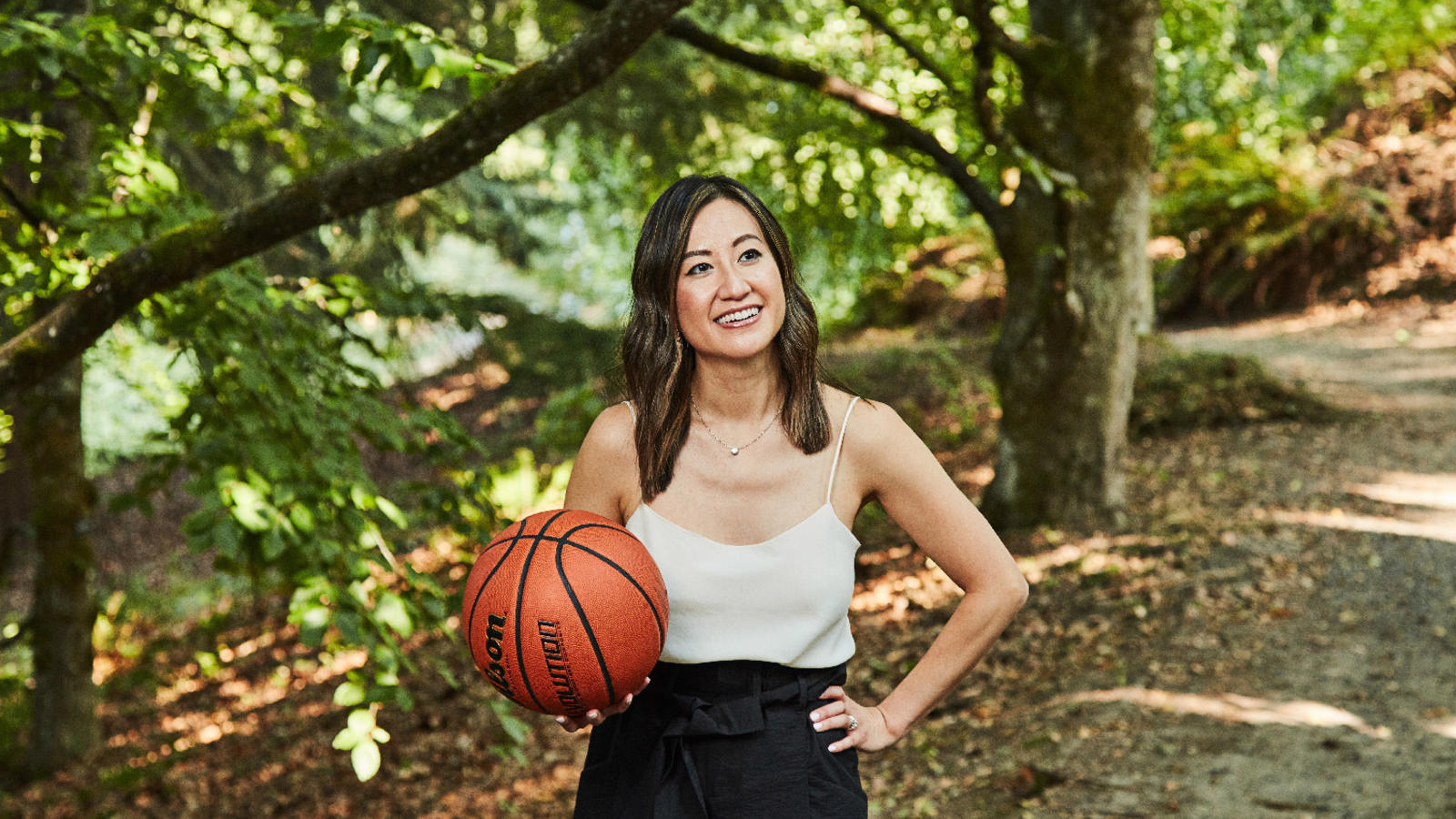
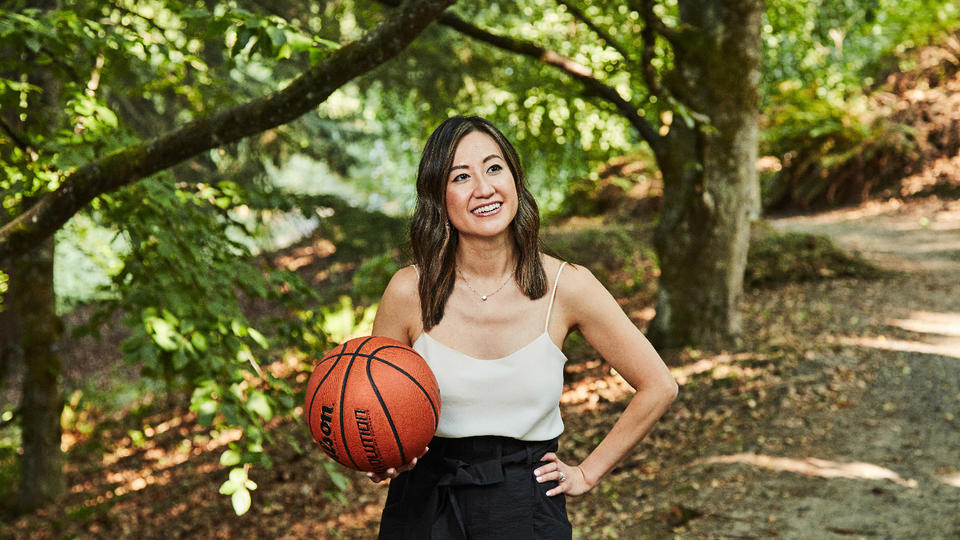
How MBA@Rice is helping Jennifer Dinh ’21 pursue her hoop dreams
Regardless of when you attended or where you are in your journey, the Rice Business family is there for you. We have regular touch points and live communication with our dean, professors and class instructors — and that goes for alumni as well. Many of these professors and alumni have extraordinary academic pedigrees and do very important work, but they pick up every time you call and respond to every email.
Jennifer Dinh, MBA@Rice ’21
As a pharmaceutical sales manager specializing in oncology, Jennifer Dinh is inspired every day by the talented doctors she works with — but she fears that her job will become obsolete within the next decade. She got into pharmaceutical sales right out of college, and has seen the number of jobs like hers dwindle over the past 15 years. The problem, she says, is that the industry is built on a dated sales and marketing model. “In the 1980s and 1990s, with so many new medications coming to market, doctors relied on pharmaceutical sales reps to give them the latest information about breakthrough therapies,” she explains. “Today, doctors have so many other ways to keep up with the latest drug discoveries and advances. From online publications to connecting with thought leaders easily and electronically, there’s less reliance on sales reps to bridge that information gap.”
Around the time she realized her current career was on its way out, she welcomed a daughter — and started reflecting on her life in a whole new way. “I always tell my daughter to dream big and be whatever you want to be,” she says. That message rekindled her own longtime interest in sport management and inspired her to pursue her dream job: head of business operations for an NBA team. “Very few women occupy that position, and there’s a perspective that’s missing in most NBA front offices. I believe that adding different perspectives and backgrounds at a leadership level allows for growth, and I would love to be that agent of change and growth,” she says.
Dinh grew up in Houston, the daughter of refugees who found a home here, but now lives in Portland, Oregon. So when she decided that an MBA would help her on her path, Rice Business was her top choice, and the MBA@Rice program was the best fit. Her connections through the MBA program helped her get an internship with the Golden State Warriors this summer, which she did virtually because of the pandemic, gaining experience in everything from operations to marketing to sales. And she found that her experience in the evolving pharmaceutical industry translates surprisingly well to the NBA.
“The challenge they have is similar to my current industry,” she says. “Customers are consuming information and experiences so differently than they did in the 1990s. Today, fans can get a really great sports experience on TV and find all the highlights online. So finding an unmet need to fill in fan engagement has been one of their greatest challenges. And my experience in seeking out those needs, along with my formal training in finance and operations from Rice Business, will make me a strong asset in helping them adapt.”
Keep Exploring
Chidi Igweh '22
What Chidi Igweh ’22 is gaining from the MBA@Rice program.
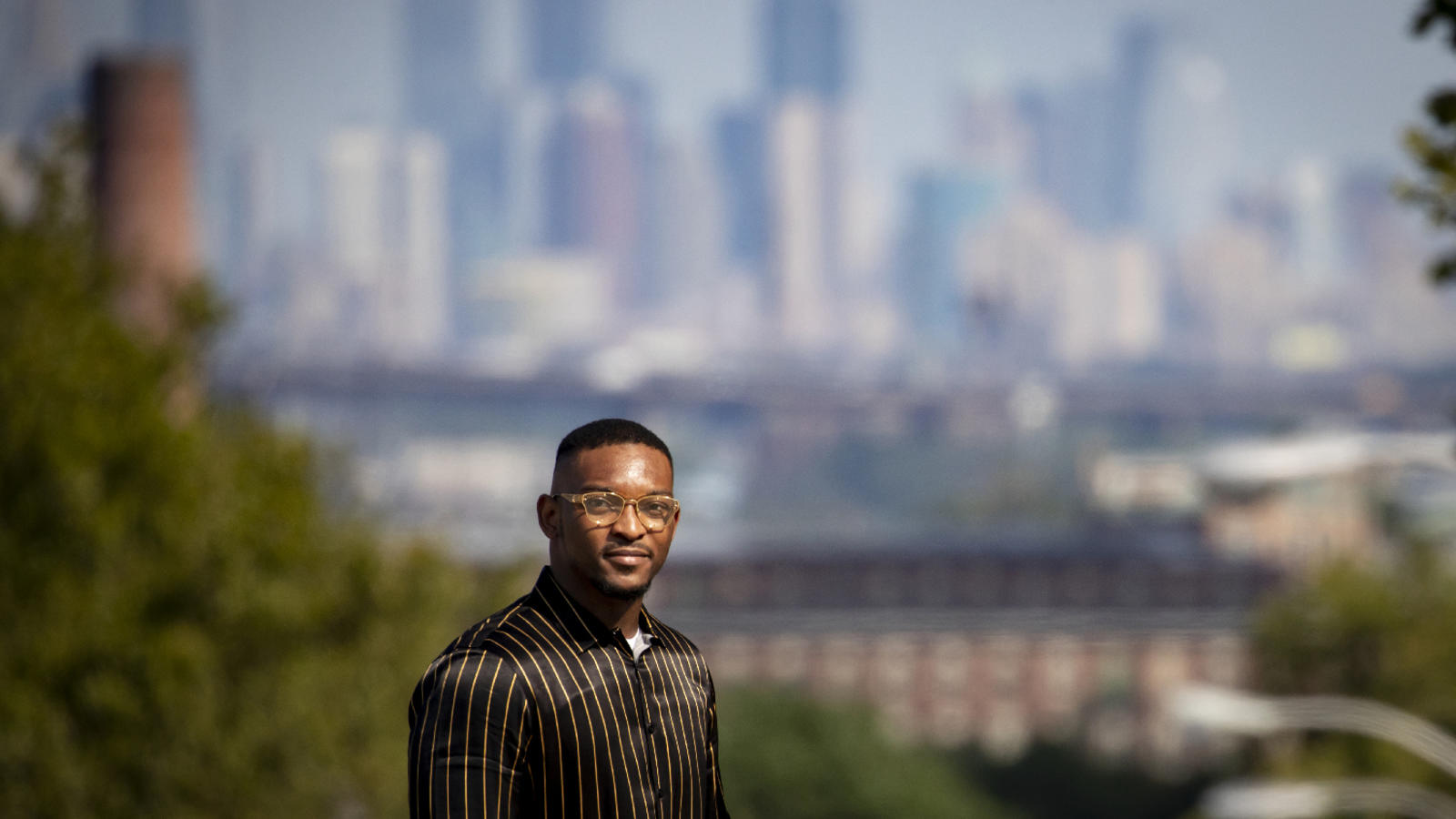
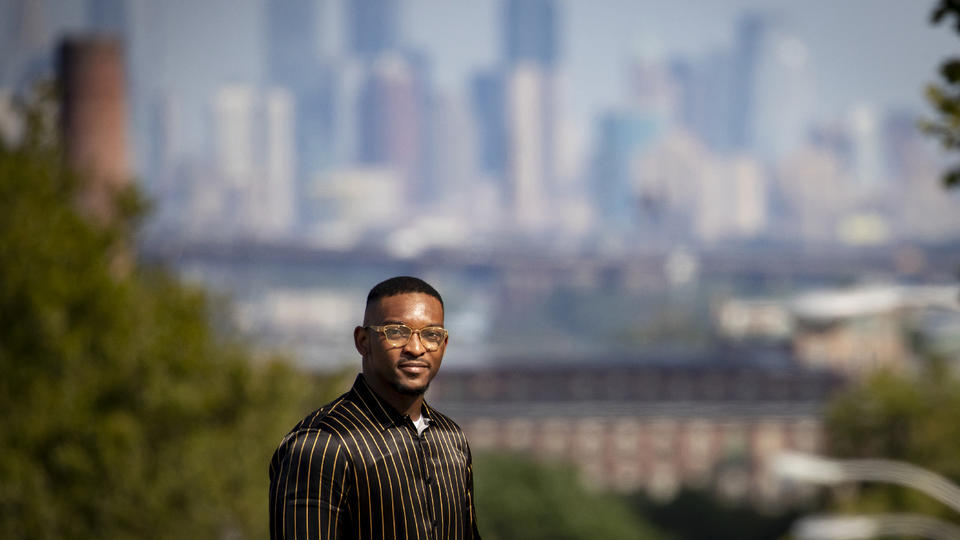
What Chidi Igweh ’22 is gaining from the MBA@Rice program
There’s a lot of technology that is missing in developing countries, in veterinary medicine and in human medicine. My experience in both areas could help create a bridge to support those people. Being at Rice gives me the support to do those things.
Chidi Igweh, MBA@Rice ’22
Animals were Chidi Igweh’s first love. Growing up on his family’s livestock farm in Nigeria, he’d help his father care for the animals — and he gave them names. “For me, they were all pets,” he says. “The chickens were pets; the goats were pets. For my brothers they probably were the product, but for me, it was personal. The animals were part of us and needed to be taken care of.”
In the 1990s, however, tragedy struck: Newcastle disease, a deadly poultry virus, spread across Africa. There was no treatment. Farmers could only watch helplessly as their livelihood was destroyed. Entire farms were wiped out, including Igweh’s. The senseless loss inspired him to become a veterinarian, which he did, eventually opening his own practice in Lagos along with a dog-breeding business. Four years later, however, he suffered another loss: One of his dogs got cancer, but because of limited diagnostic and treatment options, he once again found himself powerless to help her. “She died, and that kind of broke me,” he said. “I decided to study engineering and help create diagnostic kits for developing countries. In the U.S., you have diagnostic, treatment and management tools in veterinary care. The drugs are available here, and staff that understand oncology. Those things hadn’t made it to Nigeria.”
He came to the U.S. and earned a master’s degree in biomedical engineering from the University of Bridgeport, then took a job at Johnson & Johnson, where he delivers strategic advice about the company’s medical devices to healthcare practitioners. But he realized that to really make a difference in medicine — human or veterinary — he’d need a sophisticated understanding of the business side. “I started to realize there are ways to manage healthcare apart from the technical side. There are options like investment: finding out who has a great idea and needs funding for it,” he says. “As an investment banker, for example, I could identify a medical device that could solve a problem, and I could have influence enough to direct funds to support that business and maybe help developing countries in the long term.”
He decided to pursue his MBA at Rice Business partly because of the school’s deep ties to the healthcare industry. And because he lives and works in Newark, New Jersey, he chose the MBA@Rice program. The surprise for him has been how connected he feels to his classmates and professors, even though the program is virtual. “I feel like this program is teaching me about life — I wasn’t expecting that,” he says. “Strategic communication or even managerial economics — those things affect your life, your personal life, as well. You can use them in every part of your life.”
This new path could lead him to investment banking with a focus on medical technology — or perhaps enable him to start his own business one day. “I think if I were to own my own business, it would be animal-care related,” he says. “It could be creating a diagnostic center for animals using the latest equipment — basically helping vets use modern equipment, especially in cancer detection. I’d want to focus on the animals, and focus on disease prevention, to solve problems before they happen."
Keep Exploring
Q&A with Professor Mikki Hebl
Will the Black Lives Matter era reshape the way America does business?
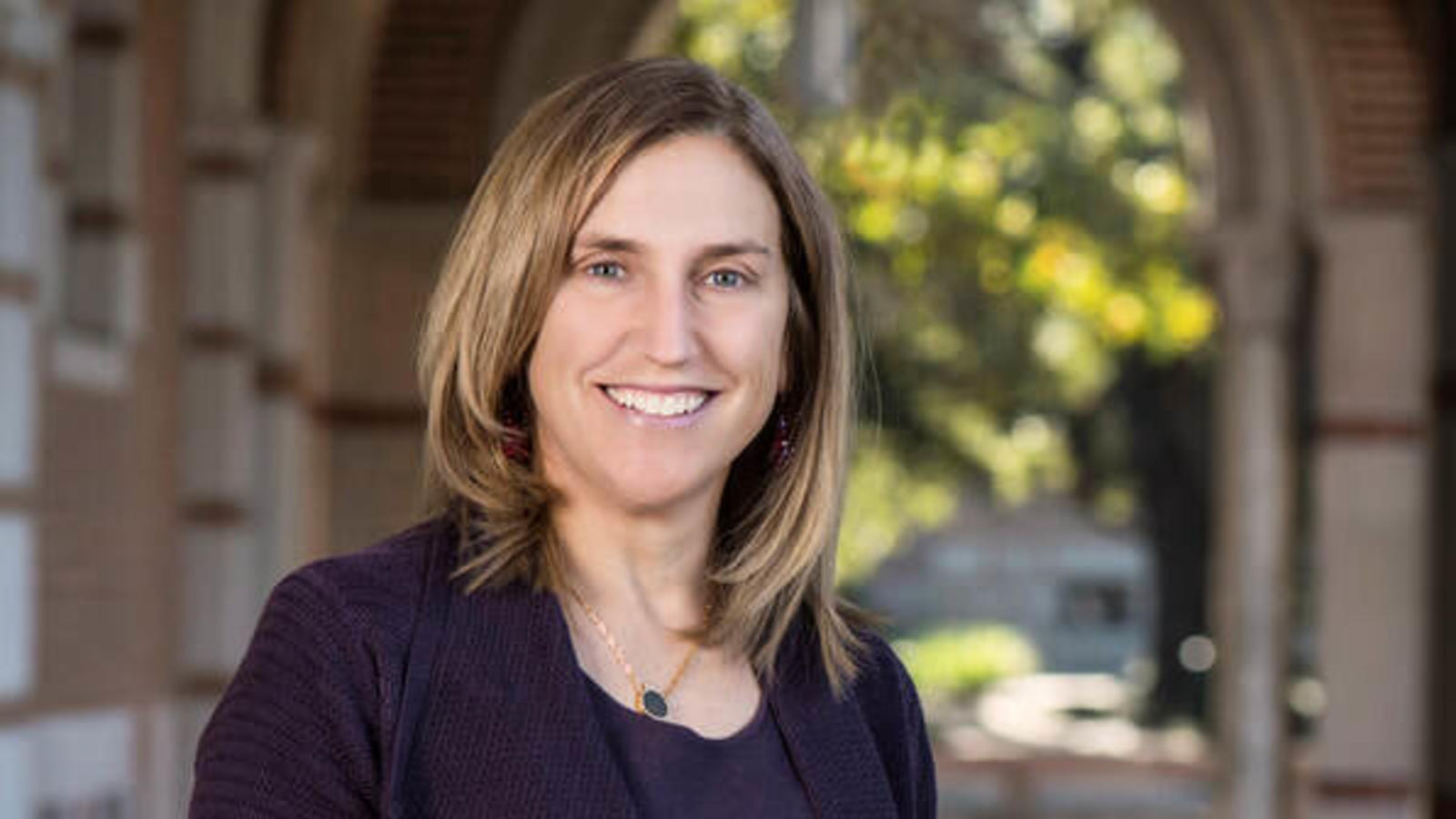
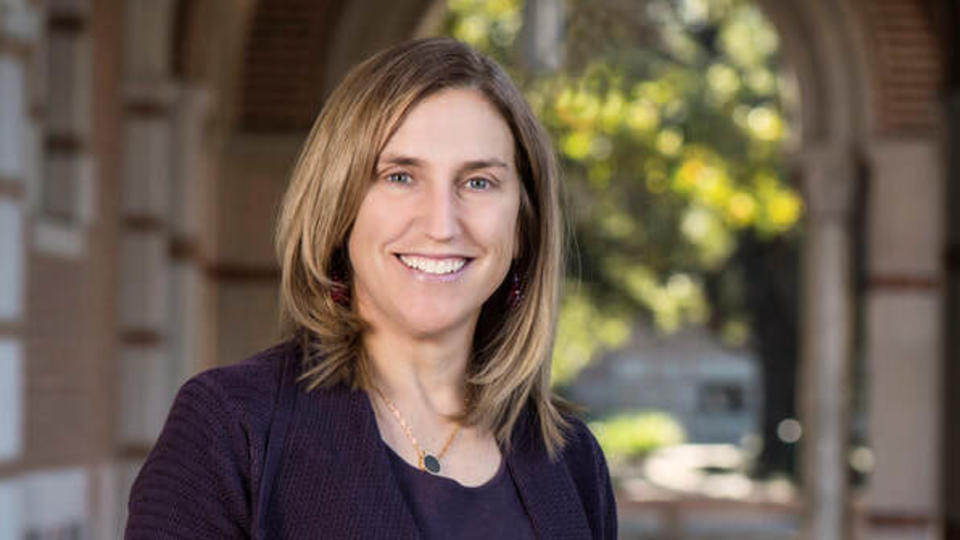
Will the Black Lives Matter era reshape the way America does business?
Rice Business professor Mikki Hebl specializes in lifting the bedrock of business to study the unsettling activity underneath. Her research reveals the health and productivity effects of workplace discrimination, bigotry toward overweight men, and how legislating bans on workplace bigotry change everyday behavior. Encompassing both psychology and management, Hebl’s findings have special urgency now that historic numbers of Americans are linking institutional racism and the killing of Black citizens, including Breonna Taylor and George Floyd. We spoke with her about how the Black Lives Matter movement is transforming American businesses — and whether those changes will last.
Q: Your work looks at some of the most painful aspects of human interactions: racial discrimination, Nazism, prejudice against people with physical vulnerabilities, bigotry about body types. How did you come to this specialty and what are the big questions that motivate you?
A: I came this way via an education at Smith College, which made me dig deeply into looking at issues related to gender inequities in our country and world. From there, I wanted to pursue graduate studies in gender-related issues which quickly spread to just generally examining stigmatized groups more generally. I’m mostly motivated by ways we can make workplaces and lives more equitable, fair, and optimal for all people regardless of their demographic backgrounds and characteristics.
Q: Many Americans right now are learning intensively about structural, institutional and interpersonal racism. From your research, how do institutional racism and interpersonal racism affect each other?
A: They deeply affect each other. When institutional racism is allowed, interpersonal discrimination flourishes. Our own research has shown this — if you pass laws preventing formal discrimination, interpersonal discrimination also decreases.
Q: Your research gives peer-reviewed evidence for workplace issues that African Americans have been battling for generations. Do you think the new Black Lives Matter conversation — and apparent growing respect for these issues, as shown in opinion polls — will make a long-term difference in the American workplace
A: Ibram X. Kendi wrote a book called “How to Be an Antiracist,” and one of his take-home messages is that you cannot lose hope even though racism often feels like metastatic cancer. If you lose hope that things will get better, you die. Racism has been here since the inception of America, but our past does not have to be our future. And I hope this is a different moment. I am hopeful that November will bring the first vice president who is Black and female. And that with this change is also ushered in real change in the great inequities that so many BIPOC people face in our society.
Q: More specifically, do you think anti-Black discrimination in the workplace in the wake of Black Lives Matter is better? Worse? Unchanged?
A: I’m not sure that things have changed much, although I think they may be polarizing more. What we know is that prejudiced people look for behaviors that rationalize the expression of their prejudices. So, if I am against obesity and I see a heavy man eating a Snickers bar, I might say “See, that’s why he’s fat — he has terrible eating habits.” In reality, many people eat a candy bar from time to time. In the case of Blacks, if I am prejudiced, I might see the small amount of violence at peaceful protests and focus on the violence, citing that “See, Blacks are violent,” so that I can maintain my prejudiced outlook. Thus, I think that once formed, opinions can become difficult to change.
Q: What trends do you see ahead for leadership positions for African Americans in major industries? (The extremely white publishing and magazine industries, for example, have moved some African Americans to top positions in recent months.)
A: I am hopeful. Very hopeful. There are three reasons to anticipate change: the realistic, business, and moral cases. In terms of the realistic case, we do know that demographic trends show that whites are going to soon be a minority of the workforce and country. However, it is not Black individuals who are rising in the makeup of our workforce and population — rather, they are projected to remain at the current percentages. Instead, it is Hispanic individuals and Asian immigrants, both of which are expected to increase.
But the point is that white leadership is likely to change just based on the changing demographics of our country. In terms of the business case, many research studies consistently show increased creative solutions, innovation, and other positive outcomes related to diversity. And finally, the moral case posits that we must change if we are a country that truly holds egalitarian values and believes everyone deserves a fair shot.
Q: What questions do you suggest CEOs ask themselves as they reflect on their own workplace culture and their Black employees?
A: What are my own biases? How did privilege land me where I am? How can I educate myself about racism? Why aren’t there any women or minorities in upper management? What can I tangibly do to change this? How can I ensure diversity within my organization? What policies best support the people? Do I enable people to bring their authentic selves to work? Am I hiring people based on “fit” and a false sense of “meritocracy”? Am I being transparent with hiring procedures, numbers, pay equity, promotions, retention offers? These would be a handful of questions I’d start asking.
Keep Exploring
Think Globally; Act Remotely
The Global Field Experience is a key part of the Rice Business curriculum. This year, students got a cross-cultural experience without ever leaving home.
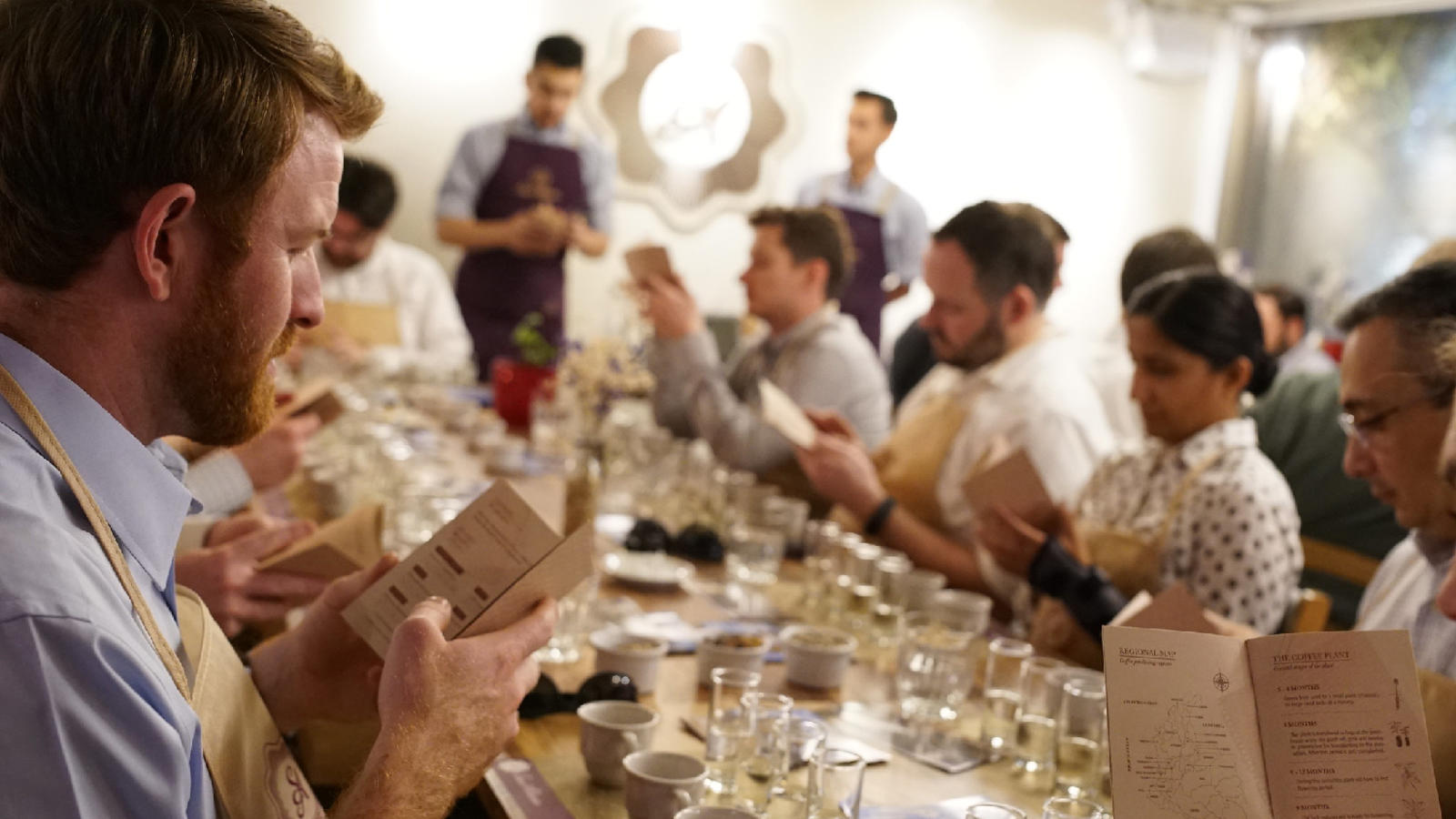
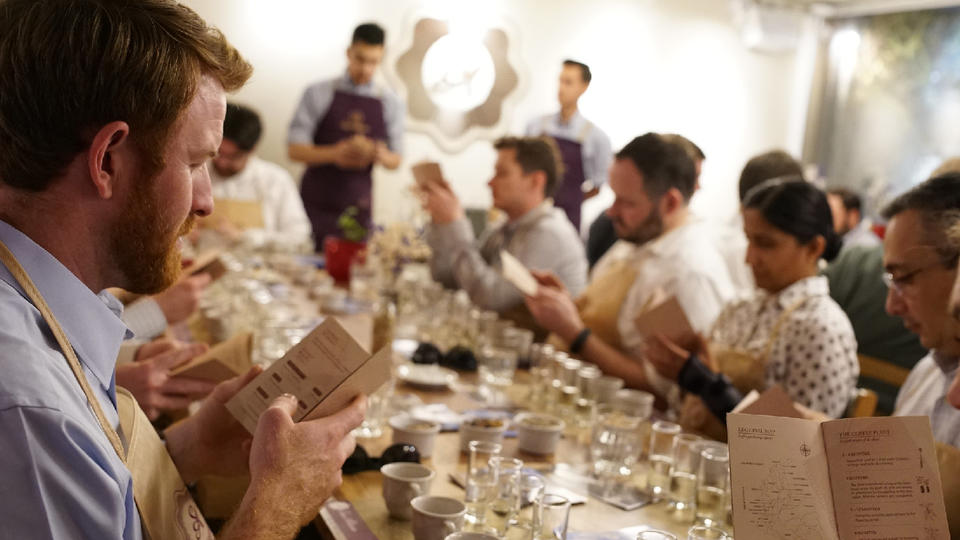
The Global Field Experience is a key part of the Rice Business curriculum. This year, students got a cross-cultural experience without ever leaving home.
In Buenos Aires, a family business that builds furniture for office buildings wanted to branch out and add modern, residential wood and steel products to its mix. In normal times, the MBA students helping Cimo Saci craft a business plan as part of a Rice Business Global Field Experience might have popped into competing furniture stores to gather intel or interviewed shoppers strolling along Buenos Aires streets.
But this year, the course faced a significant challenge: COVID-19. What is typically an immersive cultural experience, helping companies abroad solve real-world business problems, was constrained by the fact that students couldn’t safely travel. Organizers of the global program quickly adapted, however. They moved the course online, maintaining the cross-cultural dialogue — but doing it from a safe distance.
Students working on the business plan adapted as well. They created a digital consumer survey and translated it into Spanish to gauge customer interest. They interviewed competitors by phone. Then, over Zoom, they presented their client with a detailed business plan, marketing strategy and starter portfolio designed to get buy-in from the family’s patriarch and help the company jumpstart its new endeavor.
“It was a crash course in how to assess a new market, and it was a huge learning experience,” says London Hayes ’21, one of the students who worked on the project. “From marketing to understanding customers’ preferences to pricing strategies, I tackled challenges I’d never faced before. We gave the client the proof that they needed for dad.”
To adapt to the current health crisis, Global Field Experience organizers and advisors, plus the dozens of participating students, were challenged this year to come up with creative ways to work — and together, they made it a rewarding experience for all involved, says Abbey Hartgrove, senior associate director of Rice Business Global, who organizes the trips.
“Over the years, we’ve been able to develop very high-quality relationships,” Hartgrove says. “Then, when something like this happens, it’s not hard to ask people to transition to online, and they say, ‘Absolutely.’ The relationships we’ve built over time were imperative to the quick transition, and the program was a success all the way around.”
Despite having to do it remotely, students honed their critical and creative thinking skills and analytical reasoning, while the companies they worked with — many of which don’t have an MBA on staff — benefited from their in-depth research, business plans and advice.
Brandon Horne 21’, who also worked with Cimo Saci, was excited to learn about business operations in another country after working for years in the U.S. in engineering. Solving a business problem in Argentina, which has one of the highest inflation rates in the world, presented students with an especially unique challenge.
“It was interesting to see how much more work is involved when you can’t make assumptions about things we take for granted every day,” such as stable prices, Horne says. “It was a fun drill to build out a model for the client, and based on their reaction, our work was valuable to them.”
And connecting with the client virtually had some unexpected benefits, Horne adds, especially when a team member’s child inevitably wandered into the room. “The client liked to see the kids and waved to them,” he says. “It added to the relationship.”
MBA Concepts in the Real World
Part of Rice Business’ core curriculum, the Global Field Experience was created in 2018 to give students valuable experience working on consulting projects hand-in-hand with companies in emerging markets, with a focus on Latin America.
For these courses, full-time, professional, and executive MBA students split up into small teams, and each is assigned a company with a specific business problem. Teams initially chat online with executives at the companies, which range from major global corporations to local startups. They also learn more about the country and business landscape through lectures from top executives and experts in the region. Then, they travel abroad to present their solutions in person. Plans for 2020 included sending more than 400 students across six cohorts to São Paulo, Rio de Janeiro, Bogota, Buenos Aires, Lima, Santiago and Panama City.
“Students get a great opportunity to try out some of the MBA concepts they’ve picked up, and in many cases, they get a newfound confidence,” says Bill Glick, a management and organizational behavior professor who was a co-advisor to students participating in the Argentina courses. “They gain an appreciation of how to do business in other contexts and see that their ideas are valuable to businesses.”
In past years, Rice Business students have helped companies make major breakthroughs. One company even changed its name after student research revealed that it wasn’t serving the brand well.
“Students leave behind tools that companies can really use,” Glick says. “The program has done a lot of good for clients.”
David Van Horn, an operations management professor and Glick’s fellow Argentina advisor, says that travel does amplify the experience. “But even without that, doing this type of high-quality work for an actual business over Zoom builds camaraderie. The businesses really enjoyed working with the students,” he says.
In normal times, students spend seven to 10 days in-country at the end of the semester, meeting with company executives and fine-tuning their business solution during the day, networking at night, and engaging in a service project to help the local community. During the trip, students also meet with local experts and business leaders.
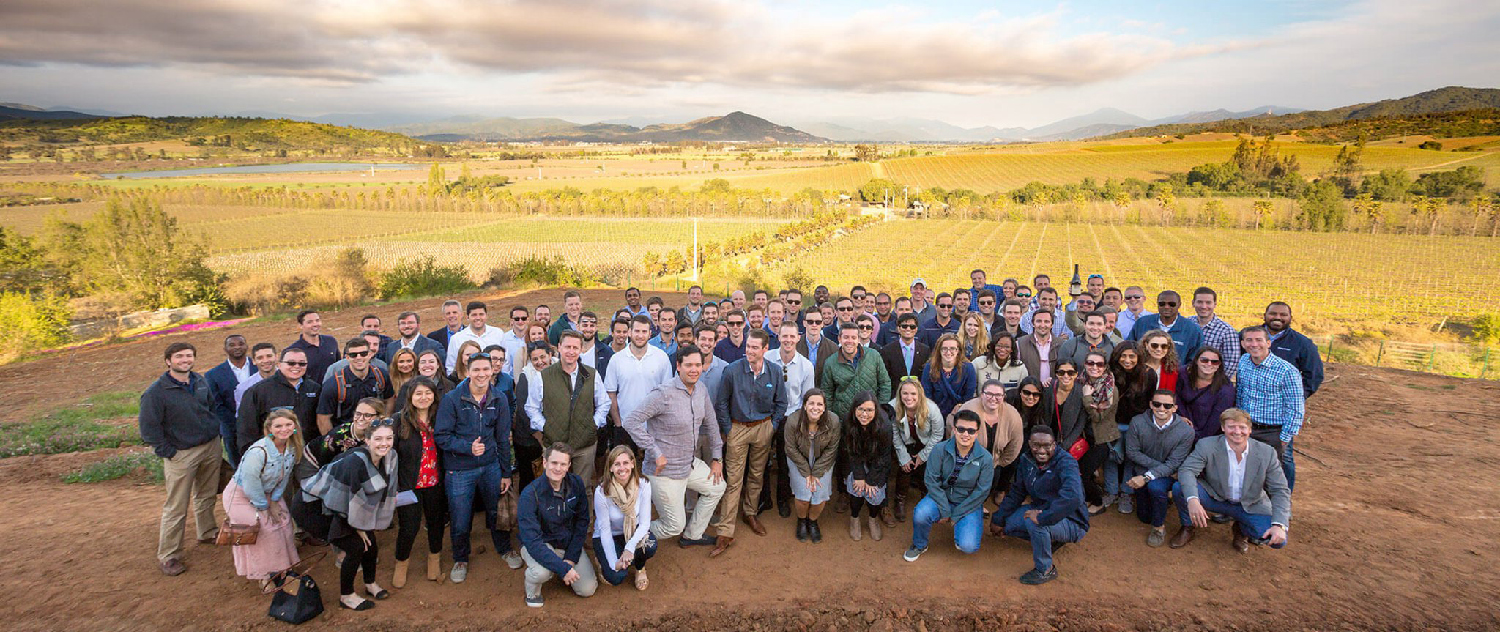
But in early March, it became apparent that this wasn’t going to be a typical year. “Storm clouds were already on the horizon,” says Van Horn. During an in-person kick-off class at Rice for the 53 professional MBA students in the Argentina cohort, travel abroad was the elephant in the room, he says. “We said, ‘Let’s see how things go.’ ”
Virtual Problem Solving
Professional students, who were assigned to Argentina, broke off into teams of five and made a top-10 list of their preferred companies out of a list of 19. Most of the business problems focused on developing strategy and marketing solutions for companies including an organic winery, an oil and gas company, a gelato maker and a handful of software companies.
“Students learn about operations, finance, markets — all the different gears of a business,” Van Horn says.
With the help of the Austral Group, which connects universities with corporations and business leaders abroad, the Rice Business professors ultimately decided on the team-company pairs. Students then met executives from their business virtually, as they normally would have. Michelle Depenbrock, ’21, said she was excited to travel to Argentina, adding that the uncertainty about the travel piece was difficult. “We were all on the edge of our seats trying to make plans and to get a definitive answer,” she says.
Weeks later, it became clear that travel abroad would not be happening because of the pandemic. Students would spend the next several months solving their business problem virtually. Depenbrock ultimately found she enjoyed working online with global steel pipe manufacturer Tenaris, which needed help refining its customer satisfaction assessments. She and her team spoke with executives weekly over Zoom, and researched top customer satisfaction technology and methodology online.
Of course, it’s impossible to replace the in-person networking opportunities that students missed out on this year. Those add another dimension to student-client relationships, Van Horn says, including what likely would have been dinners with CEOs, possibly in their homes. Some experiences just can’t be replicated online, he adds.
For example, in a past year, a team working with a Chilean textile import-export company gained valuable insight into the industry by walking around a massive textile marketplace in Santiago. “Sometimes, flat out, you just need to be there,” Van Horn says.
And working digitally brought new challenges. Connecting only through email and over screens made it tricky to get a feel for the client and exactly what they wanted. “Sometimes what they put on paper is not exactly what they want,” Depenbrock says.
But that drove home a valuable lesson, emphasizing the need to ask probing questions and to clarify the client’s goals every step of the way, she says. Once team members clearly understood Tenaris’ goals, they consulted with faculty and were able to deliver exactly what the client wanted.
Depenbrock’s team was thrilled when a high-level global marketing executive joined their final Zoom presentation and Q&A. “We were very happy with our client,” she says, “and the client seemed to be really pleased with what we delivered.”
Agustin Martinez Mosquera, the senior manager at Tenaris who sponsored the project, says the company is considering incorporating some of the team’s recommended methodologies and new technologies. “It was a great experience, and students surpassed our expectations,” he says.
The Benefits of Going Digital
Other projects this year included helping a small Argentinian winery broaden its global strategy and increase its brand reach. Students dove into research on the Asian wine market, where a majority of sales go through restaurants instead of retail stores, and where home consumption is tied more to online sales. Conversations with Rice alumni who have expertise in this market were an invaluable asset, as were conversations with Rice professors across disciplines and schools, from Rice Business to the Baker Institute, says Glick.
Crucial to making the Global Field Experience work remotely were Zoom Pro accounts, which Rice gave to all students, allowing them to seamlessly connect with their companies, Hartgrove said. She and her team coordinated virtual roundtables with Latin American executives and facilitated students and executives regularly connecting over Zoom. “There were a lot of moving pieces,” she says. “We were trying to remain innovative and get ahead of the game.”
Some students and their clients set up virtual happy hours, while others found themselves going over facts and figures with a startup CEO lounging on his living room couch. Hartgrove says that sticking with a limited number of cities, working with hand-picked companies, and taking the time to nurture relationships with executives was key.
In past years during the course’s in-person segment, meeting with local businesspeople could get complicated. Sometimes the CEO was out of town during the students’ trip; sometimes an exec’s office wasn’t large enough to host the whole team. Moving the experience online at a time when much of the world was on stay-at-home orders made it possible for more experts to participate, Hartgrove says.
“You would never have thought this would provide more opportunities,” she says, “but students were exposed to so much more, and they were amazed with how highly engaged the companies and executives were.”
Deborah Lynn Blumberg is a Houston-based freelance writer specializing in health and wellness and business and finance.
You May Also Like
Keep Exploring
Bending Toward Justice
The tragic deaths of Black Americans at the hands of white police officers have forced a reckoning in American institutions. Rice Business is asking: How do we answer the call to improve our world and address systemic racism and oppression?
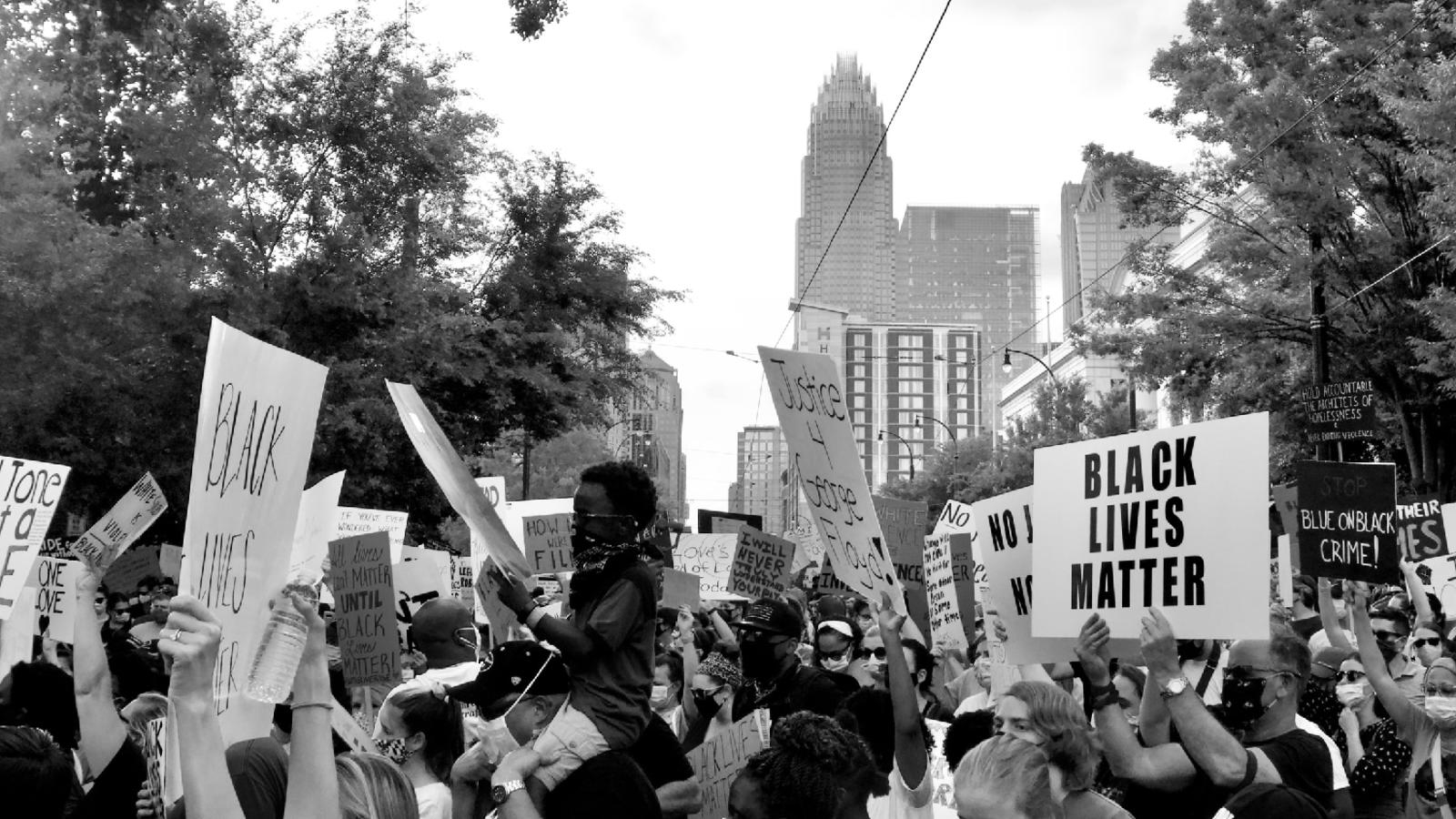
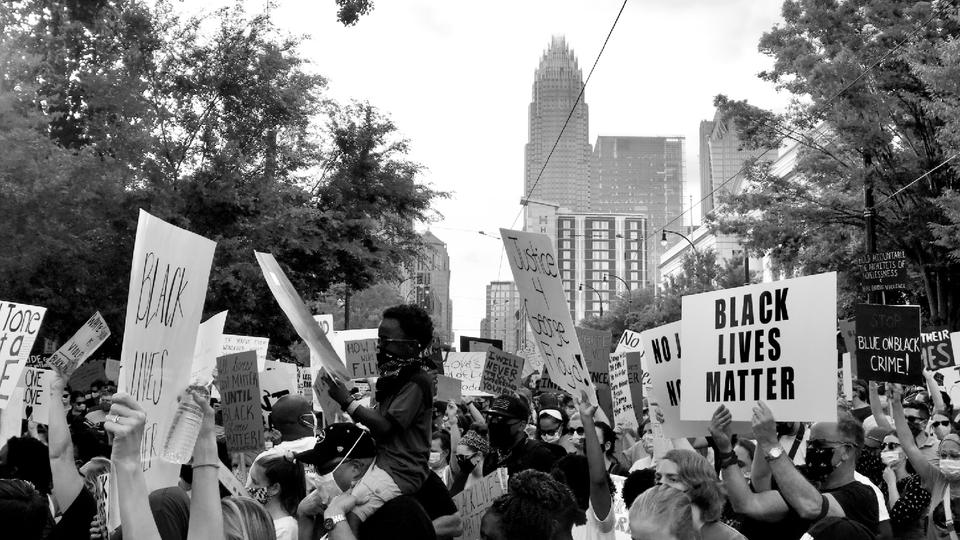
The tragic deaths of Black Americans at the hands of white police officers have forced a reckoning in American institutions. Rice Business is asking: How do we answer the call to improve our world and address systemic racism and oppression?
Horror. Disbelief. Anger.
Those were just a few of the emotions that rippled through the Rice Business community in response to the May killing of George Floyd, a 46-year-old unarmed Black man, at the hands of white police officers in Minneapolis — an event that led to mass protests across the country. Amongst people of color, there was also the bone-deep weariness that comes from yet another stark reminder of the injustice that pervades American society.
“It’s been one of the most exhausting, emotionally draining times in my life,” says Valerie Valentine ’21.
Valentine, who is president of the Black Business Student Association, lost her father in the fall. She has not set foot in McNair Hall since spring break, when the school moved to remote learning in response to the COVID-19 pandemic. And she admits that having to process what Floyd’s death means for her as a Black woman — figuring out how to respond and where to focus her energies — while simultaneously navigating the challenges of life during a global pandemic has at times been overwhelming.
But if there is fatigue, there is also hope. Hope that administrators and faculty, students and alumni can seize this moment to achieve real and lasting change on campus and beyond.
It’s heartbreaking, but what I feel right now is momentum. We need to move now.
Nalani Ortiz ’21
Shortly after Floyd’s death, Dean Peter Rodriguez established the Rice Business Task Force on Racial Equity and Social Justice. Meanwhile, the Jones Student Association launched a GoFundMe campaign that has so far raised more than $12,000 for Houston-area nonprofits such as Black Lives Matter Houston and the Black Trans Advocacy Coalition.
In ways both large and small, the entire community redoubled its efforts to confront and repair the injustice and inequality that have dogged this country for far too long.
“It’s heartbreaking,” Nalani Ortiz ’21, says of the recent killings, which include not only the death of George Floyd but also those of Ahmaud Arbery in February and Breonna Taylor in March. “But what I feel right now is momentum. We need to move now.”
Doing More
By many measures, Rice Business has been moving on issues of racial equity and social justice for some time.
When he arrived on campus in 2016, Rice Business Dean Peter Rodriguez supported and expanded the position of Director of Diversity and Inclusion. He also successfully petitioned to have Rice Business join the Consortium for Graduate Study in Management, an alliance of top-tier business schools and corporate partners dedicated to increasing minority representation in business education and corporate leadership. Member schools must demonstrate a significant commitment to diversity and inclusion, not least through scholarships to students who do the same.
“It’s been a game-changer in terms of attracting students,” says Lina Bell, who has been Director of Diversity and Inclusion since 2017.
Valentine and Ortiz are both Consortium Fellows; Ortiz serves as the Rice Business chapter president. Michael Arnold ’21, the diversity and inclusion chair for the Jones Student Association, is also a Consortium Fellow. And all three are members of the Task Force on Racial Equity and Social Justice, where Valentine serves as student co-chair.
The school partners with various organizations that work to increase the number of women and underrepresented minority MBAs. It actively recruits from as broad a range of communities as possible. And administrators, staff and students organize events that bring together alumni, Houston-area business leaders, and groups such as Out & Allied, the school’s LGBTQ organization, and the Forté Foundation, which aims to give women greater access to business education and professional development.
Those efforts have helped make Rice Business one of the most diverse business schools in the United States. According to Bell, the number of underrepresented minorities on campus increased from 10 percent to nearly 20 percent between 2017 and 2019. That same year, Poets & Quants magazine recognized Rice Business as having the highest proportion of minority MBA students of any top-25 business school in the country.
In the wake of George Floyd’s death and the ensuing protests, Bell quickly organized a series of workshops for staff on topics such as bias and systemic racism. Rodriguez created the task force, which is charged with recommending specific actions to promote racial equity and social justice. Yet everyone agrees that much work remains to be done.
Minority students, for instance, cannot help but notice that neither the faculty nor the curriculum reflect the diversity of the student body.
“I don’t think students see themselves in the faculty. I know I don’t,” says Arnold, who can trace his family roots to Nicaragua, Cuba and Puerto Rico.
What’s more, they lament the limited number of business cases that feature women and underrepresented minorities as protagonists.
“We read hundreds of cases in our first year, and none of them reflect our experiences,” Valentine says.
And while bias and inequity are sometimes discussed in the classroom in abstract terms, more difficult conversations about racial equity and social justice are few and far between.
“I can’t think of a single class where I’ve had a facilitated dialogue around race, equity, privilege and inclusion,” says Ortiz, who like Valentine identifies as a Black woman. “I really want to know where my classmates stand on these issues. But if we never get to voice our concerns or thoughts with each other, then what we are left with is assumptions. And assumptions can be so damaging.”
Rodriguez agrees. “We haven’t done enough to increase the diversity of the faculty and of the groups of people who work in the building. And we haven’t done enough to infuse the curriculum with thoughtful training on what race, ethnicity, sexuality, and everything else that creates differences amongst people tends to do to the way they think of each other and how they behave in groups and in society,” he says, adding that doing so is critical to the school’s mission of producing ethical leaders who can build efficient organizations.
Diversifying the Faculty
Making progress on these fronts will require an innovative mindset and a willingness to play both a short game and a long one. Fortunately, those are the specialties of the house.
The relative lack of faculty diversity, for instance, is a reflection of a larger problem that afflicts all top-tier business schools, and addressing it in a comprehensive way — i.e., increasing the number of underrepresented minority PhD candidates and ensuring that they have a level playing field in terms of career advancement — will take time.
The school already participates in the PhD Project, an initiative that helps Black, Latinx, and Native American students earn doctorates in business. But as Rodriguez points out, the current gap in faculty representation is so large that the PhD Project could triple its numbers and still not fill it.
“There’s no short-run solution to that part of the problem,” he says.
There are, however, a number of things that Rice Business can do to improve the situation in the short term while addressing the larger problem over the long haul.
For instance, the school can expand its own PhD programs and work harder to identify talent at state schools and historically Black colleges and universities. It can reconsider the merits on which promotion and tenure are decided, looking beyond the handful of journals that currently serve as the arbiters of quality scholarship. It can invite experts who are not traditional academics to do more classroom teaching. And it may even be able to make explicit calls to hire underrepresented minorities for specific positions — though that last piece, Rodriguez admits, may present legal issues.
If the specific details still need to be ironed out, the path forward is clear.
“We have to look outside the traditional pipeline to do better sooner,” Rodriguez says. “And we have to commit to being part of the long-term solution.”
Changing the Conversation
The same basic principle applies to curricular reform. On one hand, Rice Business can encourage faculty to engage more directly in conversations around equity, bias and social justice — a task for which Ortiz, herself a former teacher, argues they are uniquely well-suited.
“Educators are taught to be facilitators of dialogue,” she says. “By avoiding those conversations, we’re really not leveraging what our faculty are capable of.”
At the same time, says Rodriguez, Rice Business can devote more resources to attracting scholars whose own research addresses questions of equity and social justice; creating symposia and other platforms for discussing race and bias; and supporting students who have their own ideas for raising those issues on campus.
It can also do more to redress the lack of business cases that feature women and people of color. Faculty members could choose cases with a more diverse cast of characters, Rodriguez says. In addition, they could augment the formal cases they use with examples of their own choosing that feature historically underrepresented groups.
Not doing these things, he contends, adversely affects the underrepresented students in the room “by putting them at a greater distance from the protagonists in their choices — or by suggesting that they could not be leaders.”
A Force for Change
All of these changes fall within the purview of the task force, whose creation in early June was initially met with a certain amount of skepticism by students. At the time, some worried that it would move too slowly — or worse, that it was meant to quell their concerns without taking meaningful action.
“A lot of us were like, ‘Why do we have to wait for a task force?’” recalls Arnold.
Those fears were laid to rest by the composition of the group, which includes a diverse mix of students, alumni, faculty and staff, and by its timeline: While he has made clear that anyone can present him with a request at any time, Rodriguez has asked the task force to present its preliminary recommendations to him no later than October 2 and its final recommendations no later than December 18.
“I do feel as if the school is listening,” says Ortiz.
Yet the task force is only one vehicle for change. Bell, for example, would like to find ways of increasing collaboration with other units within the university that do work related to diversity and inclusion, such as the Baker Institute for Public Policy and the Center for African and African American Studies. Student members of the task force have already reached out to deans and faculty members to explore their own ideas for addressing themes of bias and representation, equity and injustice. And Arnold has been mulling future JSA initiatives.
It’s too early to tell exactly what will come of all this activity. But one thing is certain: The results will reverberate well beyond McNair Hall.
“What we instill in our student body will ultimately radiate into all of the different businesses that students will have their hands in,” says Ortiz. “If they learn to release their assumptions and judgments about people, they’ll know how to check their biases, or at least be aware of them.”
That applies not only to race, says Rodriguez, but to gender, sexuality, and all the other elements of the human experience that make for diverse and inclusive organizations.
“We all know that the greatest impact that we have on society tends to be through the decisions that our students make, how they see the world and how they choose to lead,” he says. “We’re just one school. I know we can’t do it all. But the right people can make a big difference.”
Alexander Gelfand is a freelance writer based in New York City who often covers business, science and social justice.
Keep Exploring
From the Dean
A letter from Peter Rodriguez, Dean of Rice Business
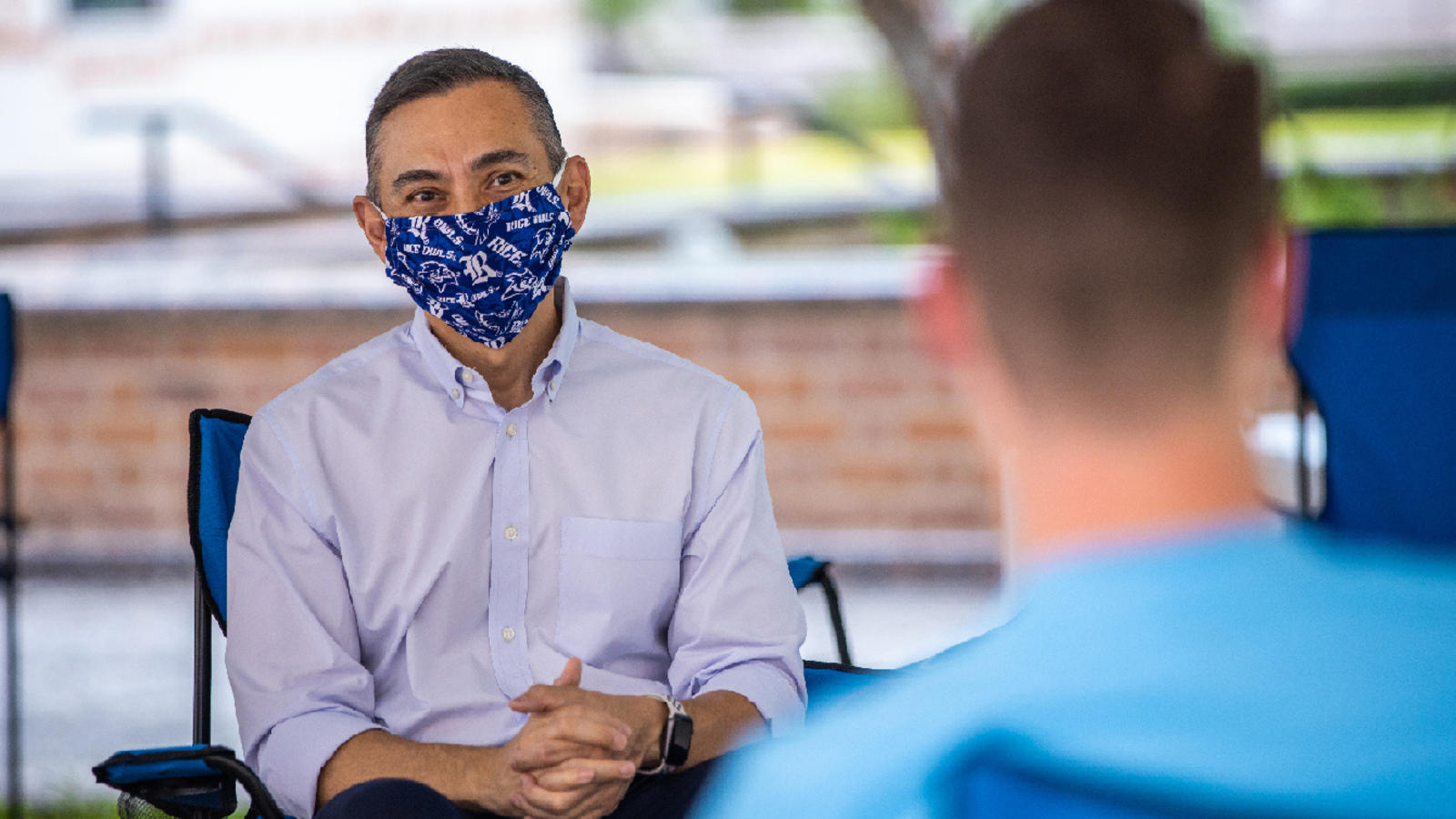
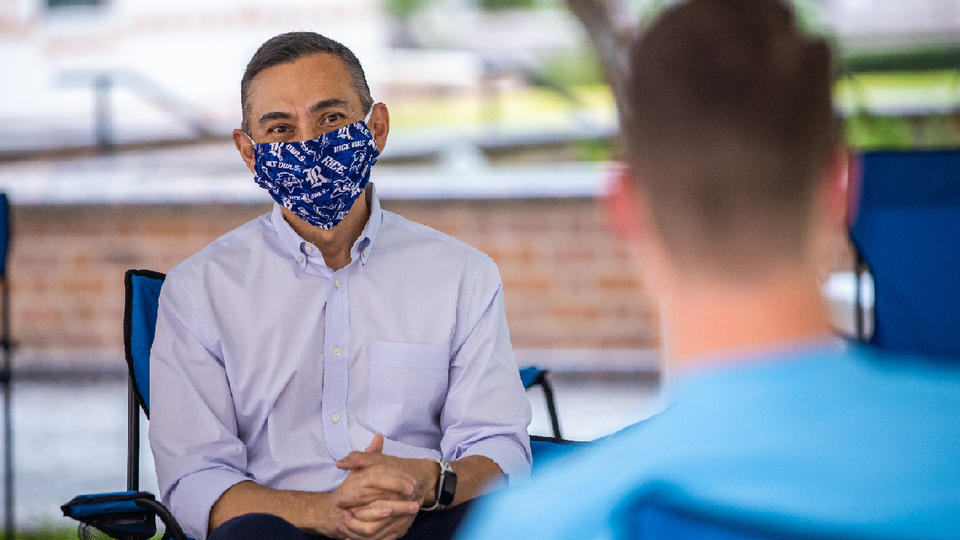
A letter from Peter Rodriguez, Dean of Rice Business
September in Houston has always been a time to catch up on campus and settle into the school year. This fall is different. We’re all wearing masks, staying at a safe distance from each other in and outside the classroom, and many of us are streaming in from our homes. However we describe it, the bottom line is that we have reinvented what school looks like. Our adaptation for safety is working very well and we hope it will put us on a quicker path to a return to the closeness we all cherish and enjoy.
In preparation for reopening, we have asked a lot of our faculty, staff and students. And still, so much is new and foreign. Except the things that connect us. Conversations. Eye contact. Laughter. Listening and learning.
At the same time we’re managing the challenges of the pandemic, we have also rededicated ourselves to rising to the urgent call to put an end to racial injustice and social inequities. Our Task Force on Racial Equity and Social Justice has been charged with researching, evaluating and recommending actions to make Rice Business a part of the solution to systemic racism. We have a lot of work ahead of us and an exceptional group leading our efforts.
You’ll have a chance to read up on the activities of the task force and some of its members in this issue of the magazine. Please join me in thanking and supporting this superb group of friends and colleagues as they pursue this critical work. Know that we are committed to being a part of the long-term solution on campus and in the world.
The magazine is filled with other good reads — a rundown on the first month of classes, what a virtual Global Field Experience feels like, and 20 years of entrepreneurial adventures. While this issue of the magazine will again be online — on our newly redesigned, elegant and inviting website — we hope to bring you real live pages to turn come the spring.
Happy fall,
Peter
